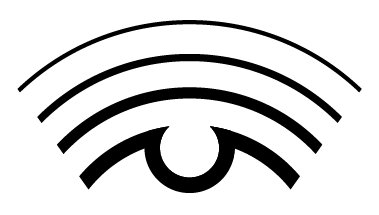When your competition zigs . . .
Ever since droning on about The Isolation Effect in my last post, I was drawn to revisit a favorite book of mine: Zag, by Marty Neumeier. If you're a designer, you're probably very familiar with him. While the book was published back in 2007, it is still relevant today. In fact, it's recently taken on a bit of controversy.
Neumeier began his career as a designer and copywriter in the 70's. Through the 80's he helped Silicon giants like Apple, Netscape, HP, Adobe, and Google build their brands. In 1996, he founded Critique magazine – one of the most intelligent and thoughtful design industry pubs of the last 30 years, in my opinion. Unfortunately, it didn’t survive. Finally, he launched a design think tank called Neutron, which later merged with Liquid Agency. From his perch there as Director of CEO Branding, he still dispenses his wisdom. I had the pleasure of meeting him at a brand workshop while he was still working on Zag. In person, he is as frank and clever as he is on the page.
In any case, let's talk about Zag.
After pointing out how the war between business competitors has moved from manufacturing ability to capital access to intellectual capital ownership and beyond, the front line is now the mind of consumers themselves.
It's here that he defines the term branding – as the label that a consumer applies to a particular company or product, as a defensive mechanism against the barrage of marketing and clutter of communication. Essentially, it is the reputation that a person assigns to your business, as they file it away in a mental box. In his own words, "a brand is a customer's gut feeling about a product, service, or company. People create brands to bring order out of clutter." The customer then becomes the gate keeper of that reputation. Hence, capitalism's battlefront is now in the mind of every consumer, as each business lobbies to influence or evolve that "brand."
So how does one go about it? First, Neumeier redefines an old adage of advertising, first set in stone in 1961 in a book titled Reality In Advertising. The author, Rosser Reeves, introduced the concept of the USP, or Unique Selling Proposition. He reasoned that "the customer tends to remember just one thing from an advertisement – one strong claim, or one strong concept."
Neumeier updates this adage to the UBT, or Unique Buying Tribe. In so doing, he recognizes that modern consumers don't like to be sold anymore. They prefer to buy. And they do so in tribes, as a function of their identity. The products and services they buy serve the way they identify themselves. "If I buy this product," they ask, "what will that make me?"
It requires extreme measures to penetrate this tribal identity paradigm, to disrupt the mental brand box associations inside each customer's mind. And here (Page 26), Neumeier gets to the crux of the matter. To distinguish yourself as a brand is fairly well understood. But in a world of extreme clutter, where so many brand associations are "baked into the cake," a business needs more than differentiation. It needs RADICAL differentiation. It's time to turn the knob up to 11.
Again, in Neumeier's own words, "traditional differentiation is an uphill battle in which companies lavish too much effort on too few competitive advantages: the latest feature, a new color, a lower price, a higher speed. Radical differentiation, on the other hand, is about finding a whole new market space you can own and defend, thereby delivering profits over years instead of months."
When everybody zigs, zag.
I highly recommend this book. It's written in a "whiteboard overview" style, making it an easy read. And Neumeier's tone is very accessible to a broad audience - not just agency denizens. Give it a look if you have the time.
Next week, I'll take on the controversy and latest challenges to Neumeier's message. There are clouds on the horizon.


